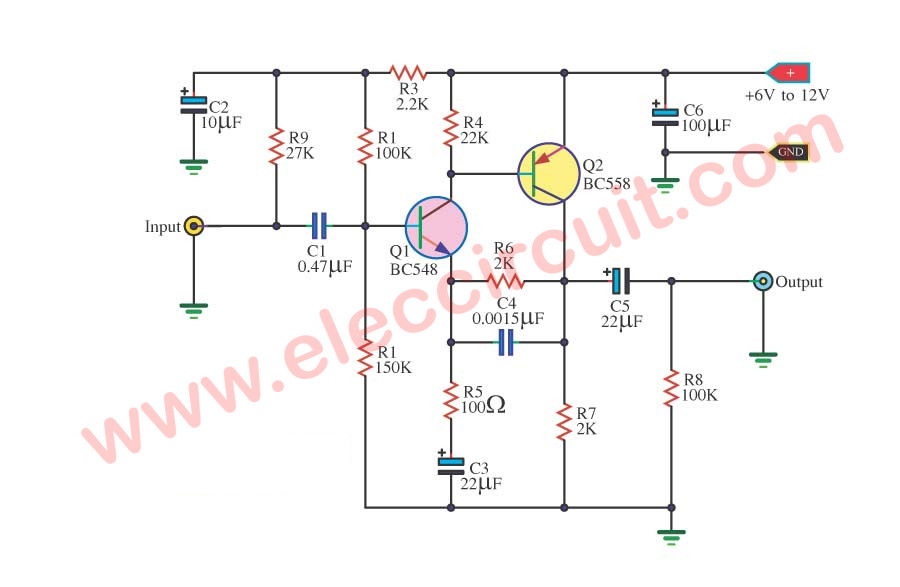Logarithmic Amplifier

Logarithmic amplifier
A log amplifier, also known as logarithmic amplifier or logarithm amplifier or log amp, is an amplifier for which the output voltage Vout is K times the natural log of the input voltage Vin.
What is the output of logarithmic amplifier?
LOG AMP ARCHITECTURES The voltage across a silicon diode is proportional to the logarithm of the current through it. If a diode is placed in the feedback path of an inverting op-amp, the output voltage will be proportional to the log of the input current as shown in Figure 6.
Why do we use log amplifier?
In general, the principal application of log amps is to measure signal strength, as opposed to detecting signal content. The log amp's output signal, which can represent a many-decade dynamic range of high-frequency input signal amplitudes by a relatively narrow range, is typically used to regulate gain.
How does a log detector work?
The detector converts the RF energy into a DC voltage which is then amplified by an amplifier with a logarithmic transfer function. A DLVA converts an RF signal with a large dynamic range into a video signal/voltage with a smaller dynamic range.
What are the uses of log and antilog amplifier?
One possible application is in true RMS detection circuits. Other applications for log/anti-log amplifiers include signal compression and process control. Signals are often compressed in order to decrease their dynamic range (i.e., the difference between the highest and lowest level signals).
What is logarithmic gain?
• Logarithmic gain has the dimension length per time. It is defined as the logarithm of a measurement in a given unit per a base measurement.
What is the use of integrator?
An integrator in measurement and control applications is an element whose output signal is the time integral of its input signal. It accumulates the input quantity over a defined time to produce a representative output. Integration is an important part of many engineering and scientific applications.
What is a differentiator op-amp?
Differentiator is an op amp based circuit, whose output signal is proportional to differentiation of input signal. An op amp differentiator is basically an inverting amplifier with a capacitor of suitable value at its input terminal.
What is multiplier in op-amp?
An analog multiplier is a device having two input ports and an output port. The signal at the output is the product of the two input signals.
What is inverting and non-inverting?
In case of an inverting amplifier, the input signal is applied at the negative (called inverting) terminal of the amplifier. In a non-inverting amplifier, the input signal is applied at the positive (called non-inverting) terminal.
How does a lock in amplifier work?
In essence, a lock-in amplifier takes the input signal, multiplies it by the reference signal (either provided from the internal oscillator or an external source, and can be sinusoidal or square wave), and integrates it over a specified time, usually on the order of milliseconds to a few seconds.
How does a charge amplifier work?
A charge amplifier is an integrator with very high input impedance. The integration functionality converts charge into voltage, and the high input impedance ensures that the small amount of charge generated by the piezoelectric transducer is not lost through leakage.
What is RMS power detector?
The Blackmer RMS detector is an electronic true RMS converter invented by David E. Blackmer in 1971. The Blackmer detector, coupled with the Blackmer gain cell, forms the core of the dbx noise reduction system and various professional audio signal processors developed by dbx, Inc.
What is a RF detector?
An RF detector monitors or samples the output of an RF circuit and develops a dc output voltage pro- portional to the power at that point. What do you do with an RF detector? RF detectors are used primarily to measure and control RF power in wireless systems.
How do RF sensors work?
Radio frequency sensors are devices that are wired to meters and display power measurements. They measure signals by four different parameters: the real and imaginary parts of electrical permittivity and magnetic susceptibility. All four of these parameters can be measured by just one sensor or in pairs.
What is meant by antilog amplifier?
An anti-logarithmic amplifier, or an anti-log amplifier, is an electronic circuit that produces an output that is proportional to the anti-logarithm of the applied input.
How do you calculate antilog and log?
Logarithmic Laws and Properties The base should be the same for both the numbers. Taking log on both sides, we have, log b x y = p + q = log b x + log b y. The division of the two numbers is the antilog of the difference of logarithm of the two numbers.
What is the antilog of?
An antilog is the reverse of a logarithm, found by raising a logarithm to its base. For example, the antilog of y = log₁₀(5) is 10ʸ = 5. The natural logarithm is useful in calculating the amount of time needed to reach a certain level of growth, if, for y = ln(x), y = time, and x = value being grown.
What is amplifier formula?
Formulas used: Voltage gain of amplifierAV=V0Vi , or this can be interpreted as the ratio between the input voltage and the output voltage of the circuit.
How much is 3dB gain?
Every time you double (or halve) the power level, you add (or subtract) 3 dB to the power level. This corresponds to a 50% gain or reduction. 10 dB gain/loss corresponds to a ten-fold increase/decrease in signal level. A 20 dB gain/loss corresponds to a hundred-fold increase/decrease in signal level.









Post a Comment for "Logarithmic Amplifier"